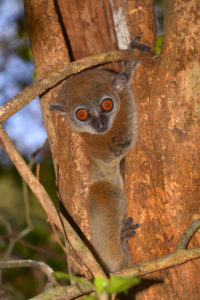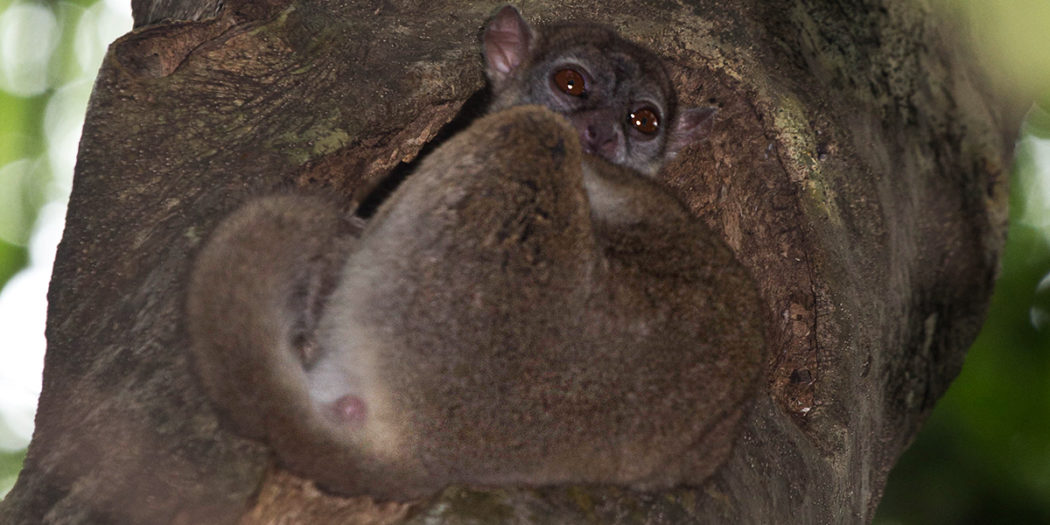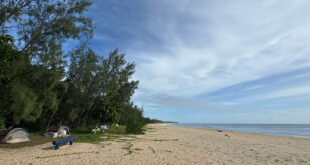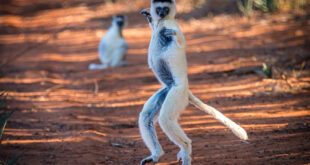Sportive Lemurs are everywhere in Madagascar. But every place has its own species. In the far north of Madagascar, in the dry forests of Ankarana, lives the eponymous Ankarana Sportive Lemur (Lepilemur ankaranensis). It is widespread as far as the nearby rainforests and dry forests of the Amber Mountain as well as Analamerana and Manongarivo and is only about 25 cm tall (not including the tail).
The Ankarana Sportive Lemur lives rather hidden in the dry forest and rests during the day in knotholes and hollow trees. When disturbed by loud noises or passing animals (and people) it curiously sticks its head out of the tree – this is how most of the photos of the Ankarana Sportive Lemur are taken. Only at night they become active, come out of their hiding places and move through the forest in search of food. With a bodyweight of just 700 g, the lightweights jump from branch to branch with feathery lightness.

The food of an Ankarana Sportive Lemur consists mainly of leaves. The specialized digestive tract can easily convert this meager food. Only in the rainy season, the diet is supplemented with fruits and buds. Despite the relatively meager diet, weasel macaws can survive in nature for up to ten years.
Ankarana Sportive Lemurs are strict loners. They only meet once a year for mating, the other months concurrents are quickly driven out of the territory. At the beginning of the rainy season, between September and December, the females give birth to one or two young. During the next four months, the offspring are cared for and quickly learn to stand on their own two feet. The fathers of the young animals have no say in rearing them – they are solely responsible for mating.
One of the biggest predators of the Sportive Lemur is the Madagascar Ground Boa. The big snakes are almost specialized in their favorite food, the small lemurs. Even if the name suggests otherwise, the boas visit the sleeping dens of the lemurs to prey on young animals, but also adult, sleeping Sportive Lemurs. That is why the small lemurs are so sensitive to noise: It could save their lives to wake up in time.
Ankarana Sportive Lemurs are listed on the IUCN red list as an endangered species, as their numbers have been declining for decades. Currently, it is estimated that there are still a few hundred animals of the species left. In addition to the unfortunately omnipresent threats to their habitat in Madagascar, such as slash-and-burn agriculture, there is also mining (sapphires, gold, but also rare earth are in demand) and hunting in the north of the island. The lemurs are – although illegal in protected areas – welcome prey in the traps of the Sakalava, the ethnic group of northern Madagascar. For years, attempts have been made to better protect the Sportive Lemurs. With fish ponds and beekeeping as alternative sources of income for the villages, with education in terms of species protection. It is a long way that man and lemur still have to go together.
 MADAMAGAZINE Your Magazine about Madagascar
MADAMAGAZINE Your Magazine about Madagascar






